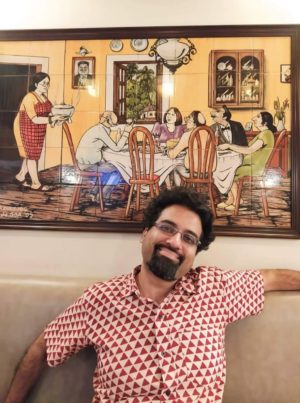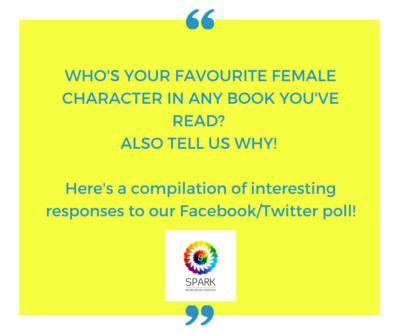An interview with Kanishka Gupta
In an interview with Spark, literary agent-author Kanishka Gupta discusses the status of women’s writing in India, the new boundaries women writers are setting and the cliches that remain in the publishing space, and what he hopes for the future.
Kanishka Gupta is a literary agent, author, consultant and publishing commentator. He is the founder of Writer’s Side, the largest literary agency and consultancy in South Asia. He has been credited for single-handedly popularising literary representation in the subcontinent. His first novel was longlisted for the Asian Booker Prize in 2009 and was published by a major Indian press in 2010. The novel received some acclaim from some of India’s leading papers and literary journals for being ‘different’ and ‘an ingeniously crafted experiment’. His new book will be published by Juggernaut Books in 2020.
Spark: What’s the state of women’s writing in India (in English) today?
Kanishka: It’s thriving and not only restricted to literary fiction [novels] which have been coming out for the longest time; women are writing in speculative genres, horror and fantasy. Many women are translating works from regional languages. The latest trend is historical writing, whether it’s fiction or non-fiction. Look at Rana Safvi, for instance, or younger historians like Parvati Sharma, or Aanchal Malhotra, who’s had a big success with her first book on partition. If you take literary fiction, women are clearly outnumbering men. Prizes are an indicator – Madhuri Vijay won the Crossword Book Award, the Tata Literature Prize and the JCB Prize for Literature. Even if you see the longlist and the shortlist, they are dominated by women. For example, this year, the Crossword Awards across many categories were won by women, including Madhuri Vijay for fiction, Jayasree Kalathil for translation, Shanta Gokhale for non-fiction, and Twinkle Khanna for the popular category. Women are not just writing women-centric stories or fiction, they’re doing daring stuff. Harper Collins, for instance, launched a True Crime imprint and there are many women, debut writers, who are writing in this category. Somak Ghoshal’s piece on women writers in Mint also reflects this trend.
That’s heartening to hear. How open are publishing houses to stories published by women? How is this different from a few years ago – say in the 2010s or when you became active in this space?
Publishing houses were always open [to women writers]. They don’t distinguish between a man and a woman. They go by the quality of the writing, the story and the author profile. The author profile is not contingent on your gender.
Although – if I may say something controversial – if you’re a pretty-looking woman, then it’s easier for the marketing people to pitch [the book] to certain publications which are visually driven, like your lifestyle, tier-1 fashion magazines.
So that sort of a thing still happens…
Yeah, it helps in packaging; however, at the end of the day people have to take to your writing. Everything still sells on word of mouth.
All the same, women are experimenting with newer genres. That’s because there are many publishing houses in India now than there were 10-15 years ago, when there were just Penguin, Harper and Rupa. And these new publishing houses are looking for newer genres. Look at Lavanya Lakshminarayan, a young woman writer who has done a science fiction collection of interconnected stories of a dystopian Bangalore. It is difficult to sell short stories, and on top of that this collection is science fiction, but still it got a publisher.
What may have caused this trend of women trying to write in these new genres?
It may be because of growing readership and access to different genres of writing in the US or the UK. People want to be adventurous and do something new. It’s also because of social media, I think. Here I also want to talk about memoirs. Take the example of Yashica Dutt, who’s writing about being a Dalit, and Priya Alika Elias, who’s written Besharam, published by Penguin. So they’re also doing bold, candid non-fiction, where they’re talking about their sexuality. Twenty-something Tania Singh has written Reshma Qureshi’s memoirs – it’s not easy to write about someone who’s survived an acid attack. Rana Ayyub has taken so many risks to write a book on Gujarat. Even Revati Laul [author of The Anatomy of Hate] – she was beaten up in Gujarat. Journalist Priyanka Dubey has written about violence against women in smaller towns, in the heartlands. And you also have many women writing poetry, such as Megha Rao, or Harnidh Kaur who hasn’t published earlier but is very popular on Instagram.
Another aspect that may have helped is the presence of women in publishing houses too. Many are headed by women or have female leads in various capacities, such as Hachette, Penguin and Vintage. Karthika VK in Amazon is handling not just content, but the entire Amazon publishing division which counts Amish Tripathi and Ravinder Singh as its authors. One division of Harper Collins is headed by Diya Kar, as is Simon and Schuster, by Himanjali Sankar. The presence of women in these positions doesn’t mean that they will have a soft corner for women writers, but they will not have any “objections” to publishing women writers.
Are themes that women write different from what men seem to bring up, or do the same themes get approached by women writers differently from men?
Women are now writing what men used to be writing. So if Prayaag Akbar has written Leila, or Varun Thomas Mathew has written Black Dwarves of the Good Little Bay, there are women writers who’re also doing dystopia. Sometimes better than men.
Men still struggle to write convincing women characters. And I’ve seen that in award-winning books too. This is especially jarring and problematic if the book is in the voice of a woman. Of course, this is not always the case. I also represent some men who have written women characters very nicely, such as the Bombay-based screenwriter Debashish Irengbam, who’s written a book about a love affair between a young guy and a widow who lives in the same apartment. The book is narrated in the woman’s voice. So it varies by writer, and their sensibility and sensitivity.
It’s great to see the diversity in genres that women are writing in. All the same, do you see diversity in the backgrounds of female authors – in terms of age, caste, class, location, etc.?
That’s a publishing-related problem, a structural one. Most women writers of literary fiction originate from cities; in fact, many of them do not live in India or are not Indian citizens. There’s an obsession with people who are based in the US or the UK, who can make a sort of a global splash. Where you’ve done your MFA from, the writer you have tutored under, your bylines – like if you have written for The New York Times or The New Yorker… these things seem to matter. These are very difficult to achieve for a woman writer who’s not connected or is living in a tier-2 or tier-3 city. I won’t say there is no diversity; for instance, I’m about to meet a woman writer who is from Jabalpur in Madhya Pradesh and will be publishing two books. And she’s got a poetry deal. Nobody gets a poetry deal with mainstream publishers. But yes, literary fiction is mainly coming out of metropolitan cities.
So I feel there is a bigger concern: the whole obsession with writers who live overseas, have international bylines, or are being represented by foreign agents. Maybe because these factors help sell the books – maybe the writer will get invited to JLF or some other tier-1 literary festival. So there is a certain level of snootiness and exclusivity. But this won’t work in this day and age – they’re just going to limit their readership.
And what about writers representing diverse backgrounds, say, different castes?
There is a lot of engagement on issues of caste. While Sujata Gidla was discovered and published in the US – because she is from the US – she was embraced by India. There was a separate edition for her book, and she won so many prizes. Then we have Meena Kandasamy, Yashica Dutt… And many men are translating Dalit literature. But at the end of the day, there has to be a compelling voice saying something new and saying something in a very good way.
In the years to come, as a literary agent, what would you want to see more from women writers?
I would really want women writers to break through in the commercial fiction space. While we do have Anuja Chauhan who’s a very good writer, I would really want a woman writer to be someone like Amish or Ravinder, and break through in a big way globally. Even if in the mythology space we have women writers who have done well and who consistently sell, like Kavita Kané or Anuja Chandramouli, we don’t have one as successful as Amish. I’d also like to see more business stories from women.
(Interview by Spark Editors)







Always insightful! Always presenting inspiring nuggets in his interviews, with a firm finger on the pulse of the market.
Wonderful interview. Very insightful and encouraging for women writers.